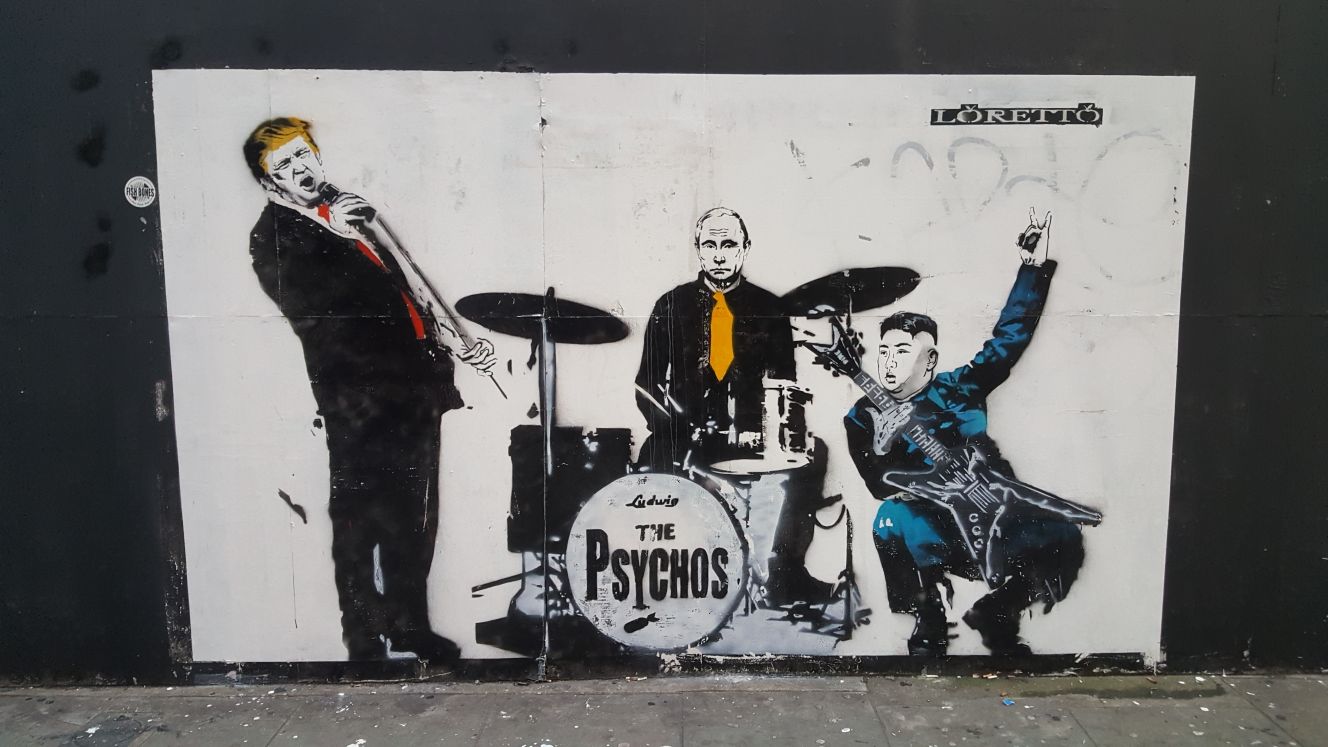When does graffiti cross the line from being art to a public menace?
At its best, graffiti sends a cultural shockwave through society.
It can achieve international fame by artistically depicting – or mocking – political issues.
At its worst it’s just, well, blobs of paint on the concrete walls of a motorway underpass.
Many will know Banksy, the famous (and at times infamous) Bristol-based graffiti artist who has created hundreds of political ‘artworks’ around the world, but are we as enthusiastic about the more mindless scribbles that plague public buildings and facilities?

Should society be more favorable of graffiti if it is easier to remove with modern methods?
As with the artform itself, it’s not just about black and white. Here are arguments in favour of and against graffiti, and more on how the worst can be handled in an environmentally friendly fashion.
There is much to speak of in favor of graffiti and its place in society.
A Rich History

Graffiti as we know it has been around for decades. The sixties saw the spread of a form of public expression far from the bubble text and large graphics of the modern style.
The message was king, as evidenced in rare photographs of old pieces.
Collections such as Roger Perry’s “The Writing On The Wall” include stark pieces in black-on-white walls simplistically shouting phrases like “WORDS DO NOT MEAN ANYTHING TODAY.”
This history matters – more to some than others.
The graffiti of the time reflected a charged political atmosphere and an outpouring of civic discontent.
Artists unconsciously worked together, forming styles unique to areas like London, Paris and New York.
More than just venting frustration, graffiti became instrumental to building movements such as American Hip-Hop.
It became a way for the unknown to make their names known and their messages heard.
Artistic Expression
 Street art in Paris
Street art in Paris
Featuring: View
Where: Paris, France
When: 06 Jun 2017
Graffiti artists argue in favor of their activities as being beneficial in expression.
Young men and women in urban areas may struggle to find creative outlets, and while graffiti is a crime in the United Kingdom if executed on public property, areas exist where tagging and creating larger set pieces are allowed.
Instead of focusing on the highly disruptive phenomenon of scoring a “runner” (a tag on an operational and moving train), proponents of graffiti speak of communities of young people who participate in graffiti competitions and gatherings at permitted areas.
They argue that there is value in occupying the time and attention of creative young minds in a controlled manner.
But does this argument hold weight when criminal graffiti is an enticing status symbol just around the corner?
But is it fair to expect a positive response from everyone?
Government Clean-Up

Bristol in the U.K. alone spends over a quarter of a million dollars every year removing graffiti from public buildings; it’s 2018-19 Education Services Grant is $500,000.
As far back as 2002, we can see BBC News articles stating that graffiti costs Londoners almost $100 million a year – money that other services so desperately need.
The cost is similar across the pond.
American authorities such as Seattle Police Department have gone as far as hiring graffiti detectives. In 2009, the fight against graffiti cost Seattle’s Public Utilities department over $1 million.
A Wider Impact

Police are required to attend sites and investigate instances of the vandalism.
Businesses temporarily shut-down in the face of major tags. Tourism is affected when visitors see unsightly graffiti scrawled over buildings and vehicles.
This sometimes results in a threatening feel to an area, such as when Mallorca saw a recent spate of anti-tourist graffiti shouting “Tourists go home” in response to the recent boom in the local tourism industry.
If we are to argue the merits of graffiti as art, it is important to be mindful of its cost to society. Does the value of the artform outweigh the financial impact on the areas to which it belongs?
Modern Removal Methods

In the past, particularly thick applications of graffiti were difficult to remove gently.
Common techniques would often necessitate a certain amount of damage to the wall or surface in question, and unsightly finishes such as ‘ghosting’ – where the outline of a removed piece was still visible – were typical.
Fortunately, thanks to advancements in technology, local authorities and business owners in the UK are supported by a range of graffiti removal methods that are both environmentally friendly and effective.
“Traditional ‘run of the mill’ aerosol graffiti can be entirely dissolved through the application of a gentle chemical mixture which is washed off with a low-pressure washer,” explained Nigel Bennett, Technical Director at See Brilliance, who are graffiti removal specialists.
“Sensitive surfaces can be restored through the brush application of a particularly benign substance before being wiped away, and even heritage sites of delicate or porous material such as sandstone can be brought back to their former glory without damage to the building or environment,” Bennett said.
Despite the wishes of some, graffiti shows no signs of disappearing.
The phenomenon has, for better or worse, ingrained itself into our culture as a country.
Since the sixties, it has been used by the young and politically motivated to spread messages, but it has also cost budget-conscious authorities millions of pounds in removal costs.
At least, perhaps, modern graffiti removal is effective and environmentally friendly.
Those in favor may agree that the best pieces deserve uncluttered attention free from prolific scribbles; those against can rest assured that the means of removal available are effective, benign and of no damage to structure and environment.





